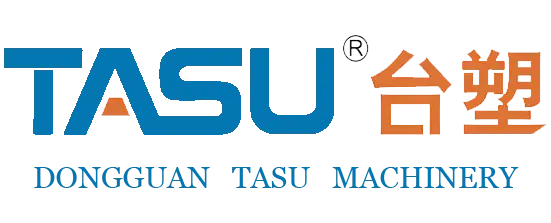The hydraulic molding machines are the oldest. They have been used for many decades to produce different parts. However, the electric machines are relatively newer. These two machines have many differences. Their distinctions give rise to a debate on electric vs hydraulic injection molding machines.
Some old-school people consider the hydraulic system as the best one. However, newer generations prefer electric molding machines. This confusion can be a headache if you are about to decide to choose one. But worry not! I’ll debunk all the confusion about these machines. So, let’s get started!
Overview and Working of Hydraulic Injection Molding Machine
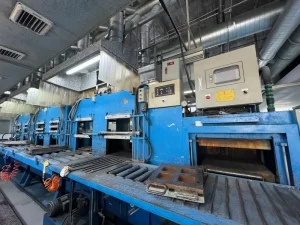
The hydraulic injection molding machine uses hydraulic fluid to produce power. The fluid puts pressure on the piston in hydraulic cylinders. This generated power rotates the screw present in the barrel of the molding machine. All components, including injection and ejection units, rely on the hydraulic system.
Let’s discuss the working mechanism of these hydraulic injection molding machines. First, the granules (raw material) are put into the hopper at the top of these machines. The granules go into the barrels of the machines.
Multiple heating elements surround these barrels to melt the raw materials (granules). There remains a screw inside the barrels. The screw depends on external force for its movement. Remember, this screw rotates to press the granules inside the barrel. The heating element provides heat and melts those granules (raw material).
The screw then pushes the material forward and injects it into the mold. But this rotation of the screw depends on external force. In hydraulic machines, the fluid generates power to rotate this screw. These machines consist of hydraulic cylinders. The fluid goes inside these cylinders. The pump presses the fluid against the piston.
Due to pressure, the piston moves and provides the power needed to rotate the screws. All the components in these machines are run by hydraulic power. It also controls the closing of molding when the material is injected into it. The working of the ejection unit is also based on hydraulic power. These machines are relatively slow in their work.
Overview and Working of Electric Injection Molding Machine
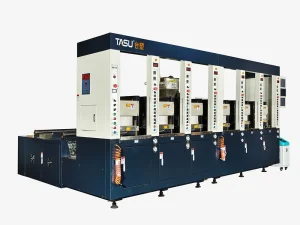
Electric injection molding machines are very modern. They were first introduced in 1983 in Japan. Their work is smooth, quick, and precise. What differentiates them from hydraulic machines is the source of power. The servo motor provides the power in these machines and is connected to the outer supply.
All the components, such as screws, molds, injection, and ejection units, are run by electric motors. The basic setup in both of these machines is the same. However, the screw in the electric machine uses electric power for its rotation. As a result of rotation, it presses the raw material in the form of granules.
The heating element is attached to this barrel. The screw presses the raw material against the wall of the barrels. So, the material goes close to the external heating element. As a result, they get exposed to heat and melt. The screw further rotates and puts the material into the molds. The electrical system controls this whole process.
These machines also consist of computerized systems and sensors. These sensors act as monitoring units in these electric injection molding machines. The motor provides power when the machines need it. All the parts are run by electric power, not with hydraulic fluid. These machines are more energy efficient.
Differences Between Electric & Hydraulic Injection Molding Machines
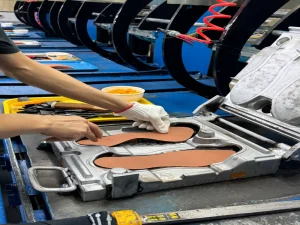
In the section above, I mentioned how these machines work. Apart from working, they have many other distinctions as well. Let’s dive further and discuss factors that set these molding machines apart.
1- Power Source
The power source is the significant factor that distinguishes these machines. As I said earlier, hydraulic injection machines use hydraulic fluid. The pump presses this fluid against the piston, creating pressure on the piston. The piston then does different tasks. For example, it can rotate the screw present inside barrels. It can also open and close the mold.
On the flip side, the electric injection molding machines are unique. They don’t use hydraulic cylinders or fluids. Instead, they use servo motors. This motor provides electrical power to all the working components of these machines. Remember, this motor is very efficient. How? Because it gives power to the components that they need exactly.
2- Speed of Working
Electric injection molding machines are very quick. The servo motor used in them responds quickly. When a component needs power to work, the motor immediately provides it. Remember, these machines use a computerized system, which makes them very efficient.
The hydraulic machines lag in speed. They use an old-school method for providing power. The fluid takes time to fill the cylinders. The pump then pushes the fluid against the piston. This process takes a bit of time, making these machines slow. However, you can expect quick production using these electric injection molding machines.
3- Energy Efficiency
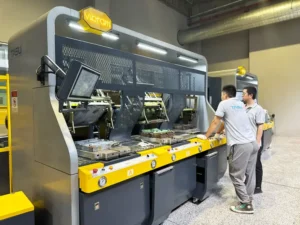
The hydraulic machines are not energy efficient. They keep running even if they are not in use. You might say I would switch off the machine when I am not using it or creating products. Right? But when you need to, you’ll have to restart the machine after a few minutes.
The machine will take some time to provide threshold energy for the components. Moreover, they require hydraulic fluid for the production of hydraulic power. Conversely, electric injection molding machines are very efficient. Their servo motors provide quick energy. You can even switch them off and on every time you use them.
Their servo motor will provide the power immediately. Moreover, these machines come with computerized systems. So, the chances of errors are minimal. You will be able to produce products in one go. This reduces the need to use machines again and again due to errors. So, electric power molding machines are ideal regarding energy efficiency.
4- Precision & Clamping Force
The electric injection molding machines are high-speed and reliable. All the components get quicker power to complete the production process. The raw materials get heat and become molten. It is then quickly filled into the molds. It means the material doesn’t solidify before being filled into the mold.
This ensures that you’ll get exact products. Hydraulic injection molding machines are not quick. The chances of molten material getting a bit dryer before filling the mold are high. So, it can give you products with some precision issues. However, the hydraulic machines provide excellent power. Their clamping force is exceptional.
It means that they can easily hold the halves of the mold together. This allows these machines to produce any size of product with ease. The electric injection molding machines are compromised regarding clamping force. They might fail to hold the mold if a large amount of molten material is filled inside the mold.
5- Cleaner Operation
As I said earlier, hydraulic machines rely on hydraulic cylinders and fluids. They use hydraulic pumps to press the fluid. The fluid’s involvement in these machines makes them messy. You’ll see fluid leakage on the machines, making your workspace dirty.
On the other hand, electric injection molding machines use electric motors. They don’t use fluid or oil, resulting in an immaculate process. Moreover, these machines have limited components, so they don’t produce any unwanted noise. However, hydraulic machines produce noise, which is another drawback.
6- Maintenance & Handling
The hydraulic injection molding machines seem simple. But they involve many parts and components. For example, their hydraulic system consists of cylinders, pumps, fluid, and pistons. You won’t get these additional parts in electric machines. Due to such parts, maintaining hydraulic machines is tedious.
You’ll have to take care of more components. There is good news. These machines have been in use for many decades. So mechanics are familiar with their parts and can repair them easily when needed. Conversely, the electrical injection molding machines don’t have many components.
So their maintenance is more straightforward. However, you’re more likely to face issues when they get any problems. The mechanics are less aware of these modern machines. Moreover, they have a dedicated computerized system. You’ll have to go to the official manufacturer for its repair. However, their regular maintenance and checks are easy.
7- Initial Cost
The hydraulic machines are inexpensive. They are easily available and do not break the bank. However, their performance is limited in many ways. Moreover, their operation will not be as smooth as that of electric machines. Remember, electric machines are very expensive.
They fall in the premium category due to their excellent performance. They can easily create intricately shaped products. Moreover, their working speed is something that you’ll love. But these features come with an additional cost. You’ll need a high initial investment if you prefer electric injection molding machines.
8- Suitability & Applications
The hydraulic machines are rugged and powerful. They use hydraulic systems to produce such intense power. Moreover, they offer a high clamping force. So, these machines can hold the mold efficiently. You’ll be able to make even large products with these machines. However, their speed is a significant concern.
On the flip side, electric injection molding machines are quick to use. However, their motor provides less energy. In simple words, their clamping force is significantly compromised. You won’t be able to get bigger-sized products from electrical machines. They are only suitable for small to mid-range products.
Quick Highlight: Both of these machines have their pros and cons. Hydraulic machines can produce large products. But their speed is very slow. The electric machines are very fast and can help meet quick deadlines.
Conclusion
Hydraulic injection molding machines are a technology of the past. These machines are simple and rely on the hydraulic system to generate power. What makes them stand out is their excellent power. On the flip side, electric injection molding machines use servo motors.
This motor is responsible for working on all machines. All the components rely on electric power instead of hydraulic power. What I love about these machines is their fast work and precision. Remember, both of these injection molding machines have their strengths and weaknesses. You should carefully take those distinctions before making a final decision.
